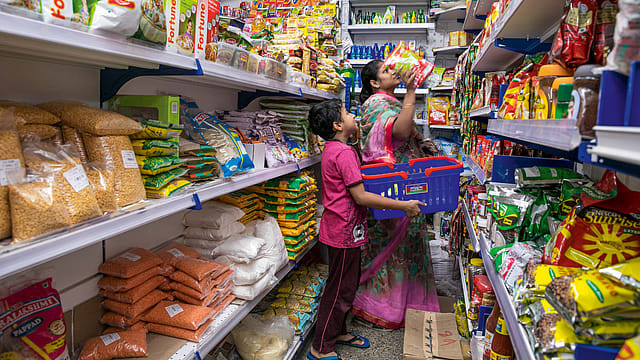India’s ‘core inflation’ rising more in goods than services; here’s why
ADVERTISEMENT

It is factually incorrect to say industrial concentration power dictates the pricing capacity of firms in India, but the corporate ecosystem in India thrives on the coexistence of large & small players, SBI Research said in its latest Ecowrap article. In contrast to the rest of the world, India’s “core inflation” is rising more in goods, where its industrial sectors are increasingly concentrated than in services, though there are early signs of pricing power rising in the “services sector”, too, says the note written by Dr Soumya Kanti Ghosh, group chief economic adviser, SBI.
India's retail inflation cooled to 5.66% in March 2023 from 6.44% in February 2023, on easing food inflation. With this, the CPI-based inflation fell within the RBI’s target band of 4%-6%.
The report comes in the wake of a recent research article by Prof Viral Acharya in Brookings Paper on Economic Activity, which noted that the “reason, why the persistence in the core inflation is rising, is that consumers do not seem to be fully benefiting from input price declines, which may be due to greater pricing power in increasingly concentrated industrial organisation structures".
Economists at SBI Research tested the hypothesis of whether the unyielding nature of India’s core inflation is attributable to industrial organisation structures across sectors where evidence of "imperfect competition" is found. For this, 7 sectors were taken into consideration: telecom, FMCG, two-wheeler, passenger vehicles, retail trade, steel & basic metals.
January 2026
Netflix, which has been in India for a decade, has successfully struck a balance between high-class premium content and pricing that attracts a range of customers. Find out how the U.S. streaming giant evolved in India, plus an exclusive interview with CEO Ted Sarandos. Also read about the Best Investments for 2026, and how rising growth and easing inflation will come in handy for finance minister Nirmala Sitharaman as she prepares Budget 2026.
The resultant “CPI Concentration Index” results showed the estimated 'Concentration CPI' is consistently less than the 'Core CPI' since January 2015. The findings suggested the increase in prices during the pandemic was more on account of supply chain and logistical disruptions caused by the pandemic and after the outbreak of the war in Ukraine rather than firms increasing prices because of higher pricing power. "It is thus incorrect to infer that concentration power dictated pricing capacity of firms and thus resulting in unyielding core inflation," says the research note.
Also, checking select sectors like FMCG, the evidence of monopsony was found, where there are many big sellers coexisting with mom-and-pop shops and the buyers are consumers, consumers and only consumers, whose preferences are the only factor dictating the pricing power in such segments.
"When we juxtapose it with the recent spurt in e-commerce space, we find the Indian landscape is dotted with crores of mom-n-pop shops who have fared better than their e-tailer counterparts or organised supermarkets, most of whom have bitten the bullet (Big Bazaar to Metro) despite economies of scale supposedly tilted in their favour."
With ONDC on the anvil, the small retailer is expected to harness better synergy and leverage the open, democratised digital marketplace to the hilt.
Secondly, SBI's ARDL model showed that it is the 'Food CPI', which is impacting 'General CPI' and not 'Core CPI'. Just a 1% increase in 'Food CPI' increased the 'General CPI' by 0.6% in the period of April 2014 to Feb 2023, it said.
Thirdly, the persistent gap between CPI and WPI (currently at 400 bps) also indicates that input pressures have been aptly absorbed by the retailers, said the research note, adding that its ARDL model shows that WPI has no impact on corporate profit margins.
Prof Acharya in his research paper had written that India could become “the next game in town” as international manufacturers adopt a “China Plus One” strategy. However, to achieve this, India must focus on developing and maintaining sound policies, he wrote.
